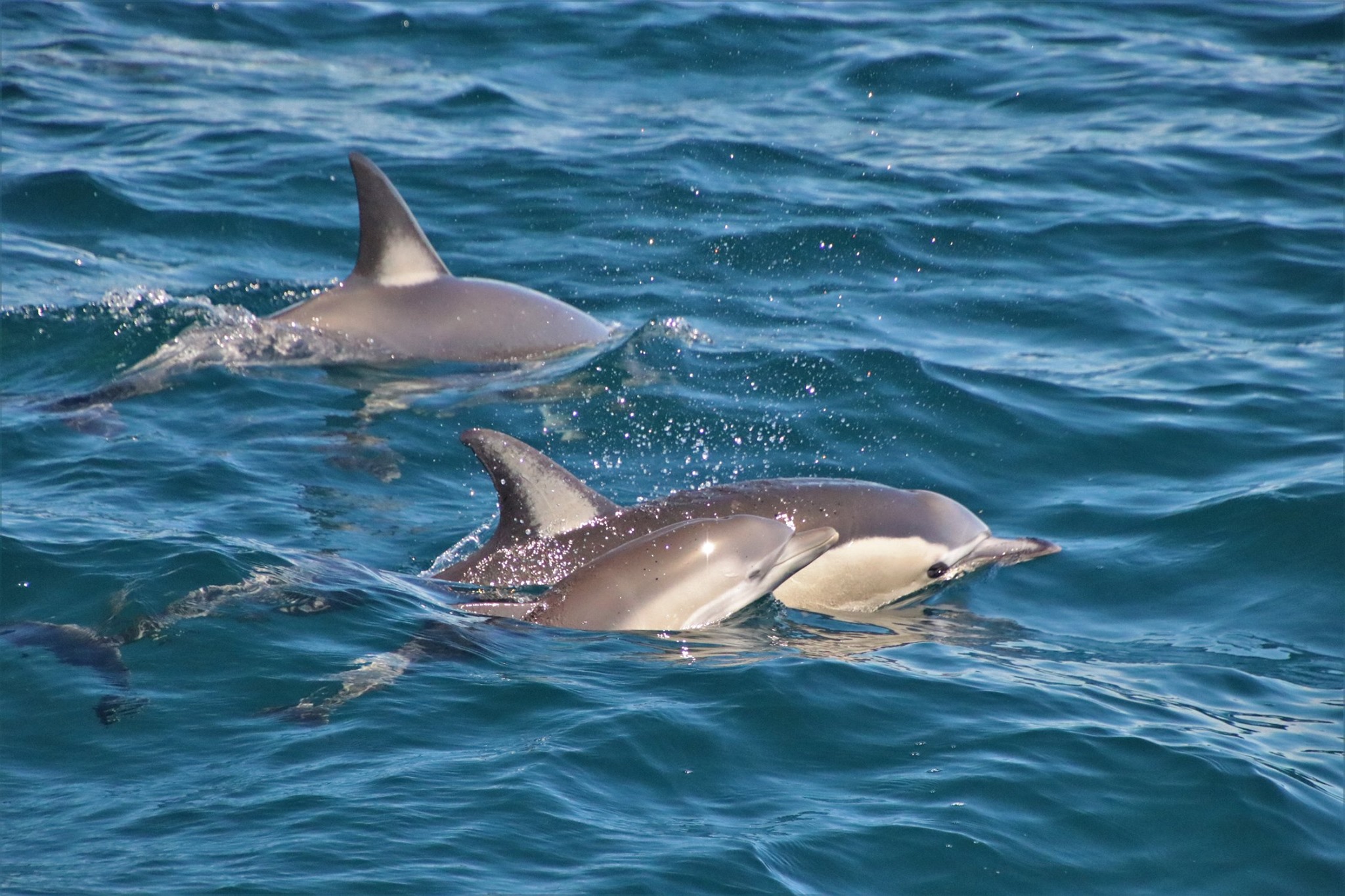| Scientific Name: | Delphinus delphis (short-beaked) Delphinus capensis (long-beaked) |
| Family: | Delphinidae |
| Range: | Warm temperate to tropical waters in Atlantic, Indian and Pacific oceans |
| Habitat: | Coastal and oceanic |
| Status: | Locally common |
| Population: | Unknown |
| Diet: | Mostly schooling fish and squid |
| Length: | 1.8-2.6m |
| Weight: | 90-150kg |

Identification
Flukes
This is the tail of the animal. Black or grey above and below, with concave trailing edges and a notch in the middle.
Dorsal Fin
The dorsal fin is a fin located on the back of most marine and freshwater vertebrates. Can be black, grey or even centrally pale. Moderately tall with concave trailing edge.
Flippers
The front limbs on a dolphin are called flippers. Black or grey with convex leading edge.
Head Shape
In the short-beaked form, forehead is quite domed and the beak is of moderate length and boldly marked. In the long-beaked form, forehead is less domed and the beak slightly longer and less boldly marked
Body
Dark grey or brown upper body pattern forms a V-shape below the dorsal fin. A yellowish patch on the mid-flank of the front half of the body and a similar sized grey patch on the rear half produce a distinctive “hour-glass” shape. The lower flanks grade to pale on the underside of the front two-thirds of the body.
Group Size
Usually travel in groups of 10-200, occasionally up to several thousand. Schools of long-beaked species tend to be smaller than long-beaked
Behaviour
Acrobatic and bowride, breach and porpoise. High pitched squeals and whistles can occasionally be heard above the water surface.